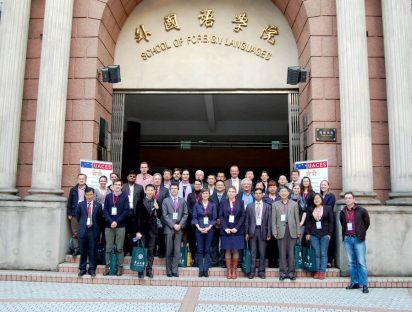In our previous article, we proposed an initial explanation of what is meant when we describe a situation, an action or a person as ‘archaic’. It is similar to the meanings of “outdated,” “outmoded,” or “retarded” that are evoked by archaism. This would be the case of a certain style of leadership or a patriarchal attitude. But this explanation raises two questions: it seems to express the equivalent of a sociocentrism (or even an ethnocentrism), which translates at the individual level as a projection of the beliefs of the author of the judgement of archaism onto others; and it implicitly presupposes that the imputation of archaism is just an extravagant way of talking about something that is considered inappropriate for the present time – whereas archaism could, after all, be understood in a proper sense. We discuss this in this article.

In our previous article , we attributed the concept of archaism to the case of the ethically or CSR indifferent large company and three immoral individual situations. This attribution seemed to refer to a lack of perception and adaptation to the norms of universal and social morality. But it could be argued that it reflected our own system of beliefs and values, that it was from this system, which we hold to be true and superior, that we had evaluated these situations.
We can refer here, mutatis mutandis, to the objection that has been formulated in the field of anthropology with regard to ethnocentrism – the idea of archaism applied to ancient societies encourages us to do so. Claude Lévi-Strauss clearly described it:
The attitude of longest standing which no doubt has a firm psychological foundation, as it tends to reappear in each one of us when we are caught unawares, is to reject out of hand the cultural institutions-ethical, religious, social or aesthetic which are furthest removed from those with which we identify ourselves. [1]
What Lévi-Strauss sums up in this formula:
Anything which does not conform to the standard of the society in which the individual lives is denied the name of culture and relegated to the realm of nature. [2]
This ethnocentrism is not specific to any particular civilisation:
When we make the mistake of thinking that the Savage is governed solely by organic or economic needs, we forget that he levels the same reproach at us, and that to him his own desires for knowledge seems more balanced than ours. [3]
There is no need to pursue this theme. Let us simply add that, in their recent book, the anthropologist David Graeber and the archaeologist David Wengrow have abundantly denounced the “myth of the stupid savage” by underlining the degree of intellectual, political and social maturity of so-called “primitive societies” [4].
Among their examples is the case of the Nambikwaras of Brazil, whose political functioning Claude Lévi-Strauss analysed in an article published in 1944 [5].
We ended our previous article with a description of “archaic leadership.” However, far from being archaic or reflecting a Palaeolithic culture because of a “very rudimentary material culture,” leadership among the Nambikwaras was modern.
Firstly, according to Graeber and Wengrow, “people like the Nambikwara live in the shadow of the modern state, trading with farmers and city people and sometimes hiring themselves out as labourers.”
Secondly, although “averse to competition,” they appointed chiefs. In their organisation, chiefs played a “social and psychological [role] quite similar to that of a national politician or statesman in European society, he noted, it also attracted similar personality types.” Graeber and Wengrow characterise chiefs as follows:
They were not patriarchs, Lévi-Strauss concluded; neither were they petty tyrants (even though for certain limited periods they were allowed to act as such); and there was no sense in which they were invested with mystical powers. More than anything, they resembled modern politicians operating tiny embryonic welfare states, pooling resources and doling them out to those in need. What impressed Lévi-Strauss above all was their political maturity.
They conclude on the leadership specific to this society:
It was precisely this quality that made the Nambikwara chief such a peculiarly familiar political figure: the calm sophistication with which he shifted between what were in effect two different social systems, all the while balancing a sense of personal ambition with the common good. These chiefs were in every sense self-conscious political actors. And it was their flexibility and adaptability that enabled them to take such a distanced perspective on whichever system obtained at any given time.
These references to anthropology suggest that it could shed light on the mode of thinking of a person whose conduct is described today as “archaic.” But the approach is tricky: does the mindset and reasoning of the sales manager who prefers to receive a 900 euro box of cigars from his supplier corresponding to the rebate his company should receive really have anything to do with archaic or primitive thinking?
The question is problematic because it includes implicit assumptions – apart from that of the actual existence of “primitive thought,” there is the assumption that it may still be active in the minds of contemporaries alongside rational thought – and because it is likely to violate the “principle of parsimony,” a principle that requires “that the most acceptable explanation of an occurrence, phenomenon, or event is the simplest, involving the fewest entities, assumptions, or changes.”[6].
The philosopher and anthropologist Lucien Lévy-Bruhl, and the Egyptologist Henri Frankfort and the archaeologist Henrietta Frankfort have proposed theories that respect the latter principle.
Lévy-Bruhl invoked the “law of participation” to account for the fact that, according to him, primitive mentality is prelogical [7]. This law authorises exceptions to the principle of identity according to which “a thing cannot be itself and its opposite” [8]. Indeed, it implies that “a being [can be] both itself and something else” [9]. In the words of Lévy-Bruhl:
Between the wizard and the crocodile the relation is such that the wizard becomes the crocodile, without, however, being actually fused with him. Considered from the stand-point of the law of contradiction, it must be either one of two things: either the wizard and the crocodile make but one, or they are two distinct entities. But prelogical mentality is able to adapt itself to two distinct affirmations at once. [10]
Frankfort and Frankfort distinguish three “modes of cognition” or ways of acquiring information about the world [11].
One of these is characteristic of primitive thought.
The first, intellectualist mode is based on the relationship between a subject (an “I”) and an object (an “It”). It is typical of scientific knowledge, involves no emotion and gives rise to verbalisation.
The second mode of cognition allows us to understand directly the emotions of others, without calling on intellectual reasoning. According to the authors, this is a “curiously direct knowledge which we gain when we ‘understand’ a creature confronting us — its fear, let us say, or its anger” [12].
The third mode of cognition is based on the relationship between an “I” (the human subject) and a “Thou” (which represents the phenomenal world). It is characteristic of primitive thought:
For modern, scientific man the phenomenal world is primarily an ‘It’; for ancient – and also for primitive – man it is a ‘Thou’.
Frankfort and Frankfort explain that this third mode of cognition lies between the intellectual and emotional modes, between active intellection and passive perception:
The knowledge which ‘I’ has of ‘Thou’ hovers between the active judgment and the passive ‘undergoing of an impression’; between the intellectual and the emotional, the articulate and the inarticulate. […] ‘Thou’ has the unprecedented, unparalleled, and unpredictable character of an individual, a presence known only in so far as it reveals itself. ‘Thou’, moreover, is not merely contemplated or understood but is experienced emotionally in a dynamic reciprocal relationship. For these reasons there is justification for this [aphorism]: ‘Primitive man has only one mode of thought, one mode of expression, one part of speech – the personal.’
Both authors conclude by pointing out that
‘Thou’ is not contemplated with intellectual detachment; it is experienced as life confronting life, involving every faculty of man in a reciprocal relationship. Thoughts, no less than acts and feelings, are subordinated to this experience.
Reading this brief overview of “primitive mentality,” it seems that the use of archaism we are discussing should be taken in a figurative sense – close to “ironic,” “mocking,” or “rude” – and not literal. Does the supposed archaism of the war in Ukraine, the archaism of the ethically and CSR indifferent big company, or the archaism of the cigar-loving sales manager have anything to do with Lévy-Bruhl’s law of participation and Frankfort and Frankfort’s third mode of cognition – the “I-and-Thou relationship?” One could always try to establish correspondences or bridges between these concepts and “modern” concepts, for example the concept of role identity or the concepts of akrasia and weakness of will considered at the levels of an individual or a collective [13].
We will consider another type of such bridges in the next article.
Références
[1] C. Lévi-Strauss, Race et histoire, Unesco, 1952, Editions Gonthier, 1961.
[2] Ibid.
[3] C. Lévi-Strauss, La pensée sauvage, Librairie Plon, 1962.
[4] D. Graeber & D. Wengrow, The dawn of everything: A new history of humanity, Allen Lane, 2021, tr. E. Roy, Au commencement était… Une nouvelle histoire de l’humanité, Editions Les Liens qui libèrent, 2021.
[5] L’article de Lévi-Strauss est « The social and psychological aspect of chieftainship in a primitive tribe: the Nambikuara of Northwestern Mato Grosso », Transactions of the New York Academy of Sciences, 7(1) Series II, 1944, p. 16-32. Lévi-Strauss écrit notamment :
« Le rôle de chef est permanent, bien qu’il ne soit pas toujours assumé par le même individu. Chez les Nambikuara, la chefferie n’est pas héréditaire. Lorsqu’un chef vieillit ou tombe malade, et qu’il ne se sent plus capable de remplir sa lourde tâche, il désigne lui-même son successeur. Il dit : ‘Celui-ci sera le chef…’. Il est probable que ce pouvoir autocratique dans la recherche de sa propre succession est plus apparent que réel. Nous insisterons plus loin sur le peu d’autorité dont jouit le chef et, dans ce cas comme dans beaucoup d’autres, la décision finale est probablement précédée d’un sondage minutieux de l’opinion publique, l’héritier désigné étant en même temps celui qui a le plus d’appui parmi les membres de la bande. […] Le consentement est à l’origine du leadership, et le consentement, lui aussi, fournit la seule mesure de sa légitimité. » (Ma traduction)
[6] E. Mach, Die ökinomische Natur der physikalischen Forschung, cité dans le Vocabulaire Philosophique Lalande, 18ème édition, Paris, PUF, 1996. Voir aussi mon article « Critiques du mythe du consommateur éthique », 15 juillet 2017.
[7] L. Lévy-Bruhl, La mentalité primitive, 4ème édition, Librairie Félix Alcan, 1925.
[9] J. Cazeneuve, « Lucien Lévy-Bruhl », Encyclopædia Universalis, Volume 9, 1968.
[10] La mentalité primitive, op. cit.
[11] H. & H. A. Frankfort, « Myth and reality », in H. & H. A. Frankfort, J. A. Wilson & T. Jacobsen, Before philosophy: The intellectual adventure of ancient man, Penguin Books, 1949.
[12] Ibid. Les citations qui suivent sont issues de la même source.
[13] « Les identités de rôle sont des ‘conceptions, des cognitions référentes ou des définitions que les gens appliquent à eux-mêmes sous l’effet de la position structurelle qu’ils occupent professionnellement’ » (C. Schott, D. D. van Kleef et T. P. S. Steen, « L’impact combiné de l’identité professionnelle et de la motivation de service public sur le processus décisionnel dans les situations de dilemme », Revue Internationale des Sciences Administratives, 84(1), 2018, p. 25-45 ; la citation est de M. A. Hogg, D. J. Terry et K. M. White, « A tale of two theories : A critical comparison of identity theory and social identity theory », Social Psychology Quarterly, 58(4), 1995, p. 255-269). « Faire preuve d’akrasia, ou agir de façon akratique, c’est agir sciemment et librement à l’encontre de son meilleur jugement, c’est-à-dire du jugement qu’une autre ligne de conduite est meilleure » (A. Anquetil, « Agir intentionnellement contre ses valeurs », Gérer et Comprendre, 78, 2004, p. 4-17).




